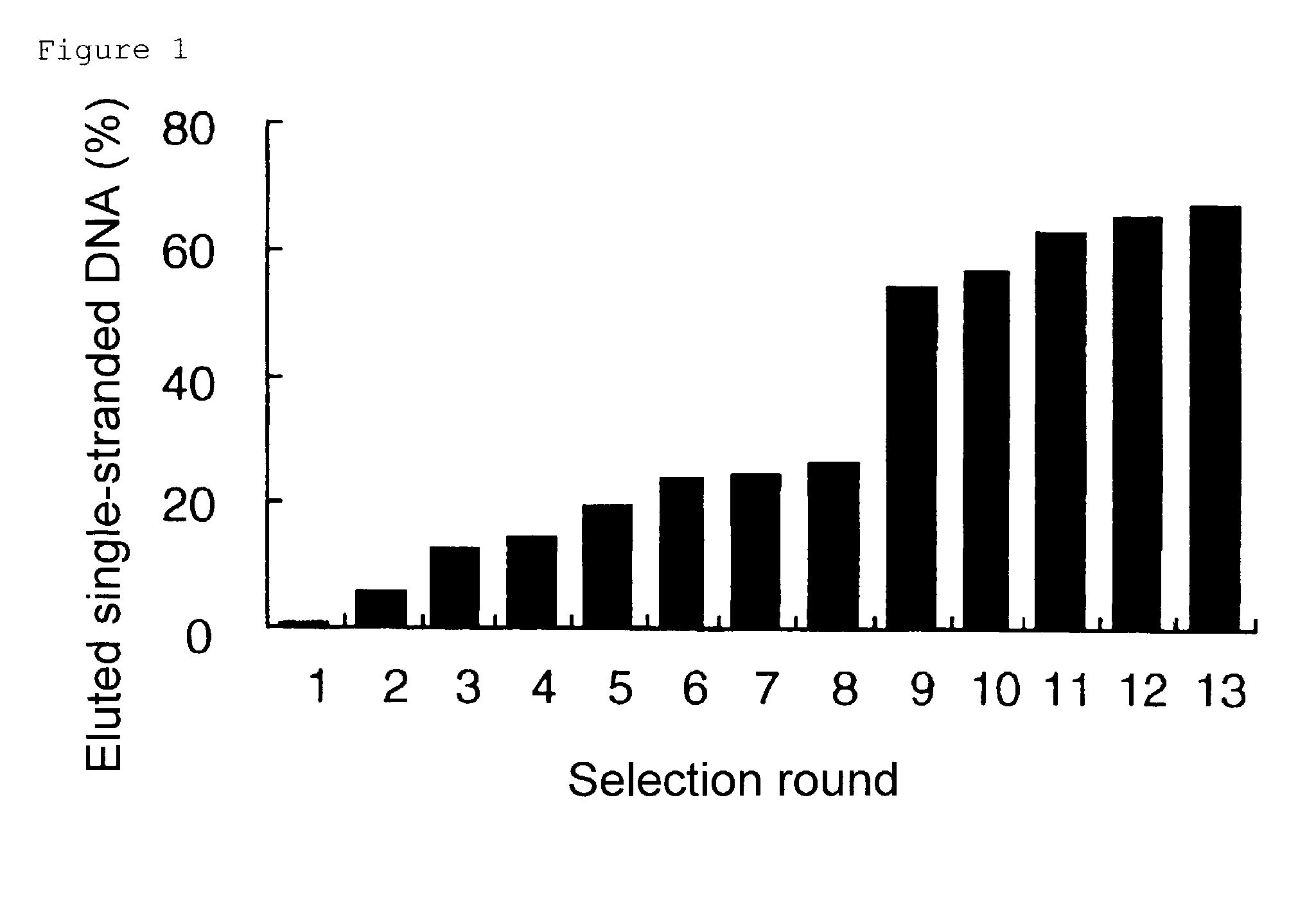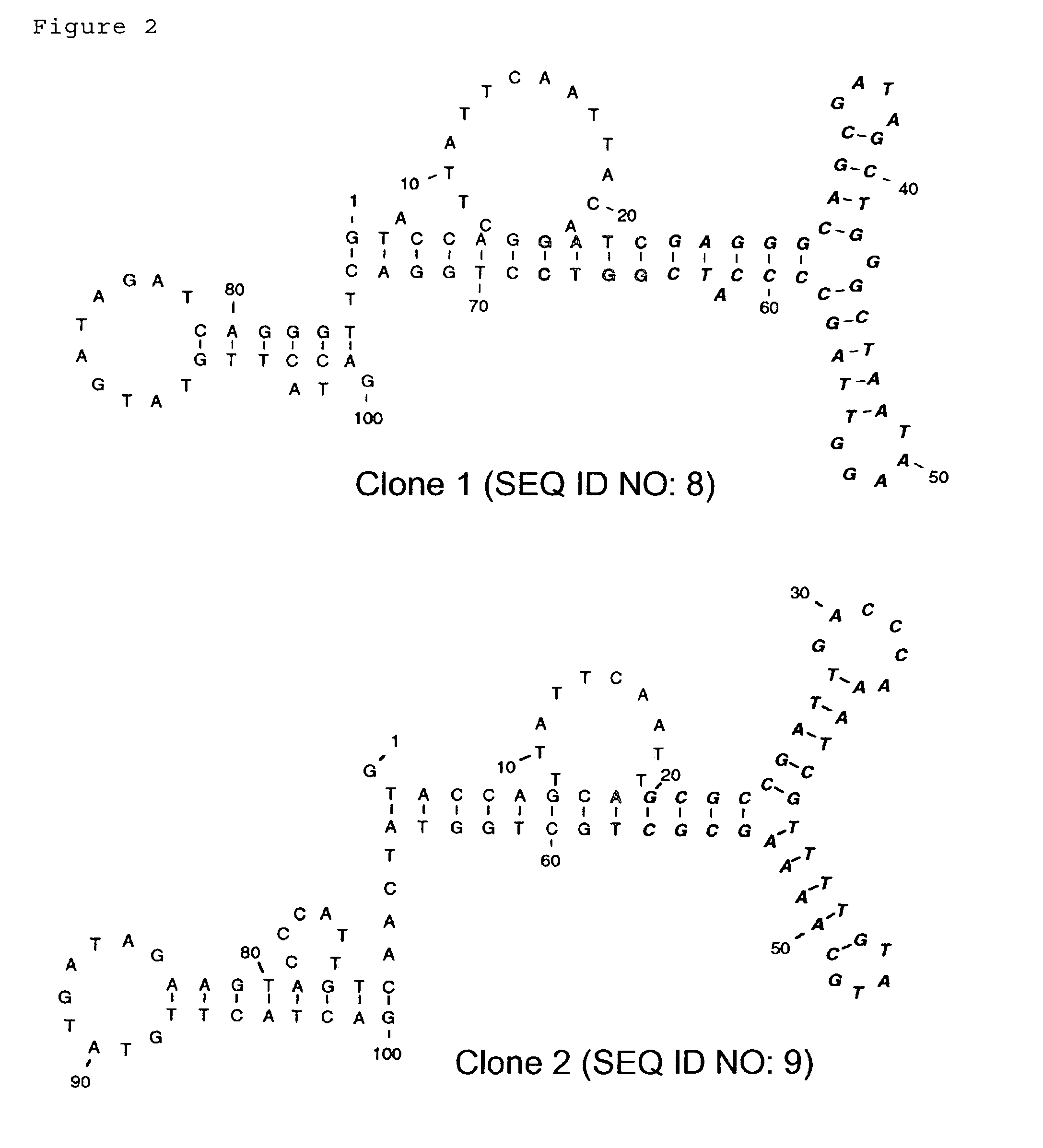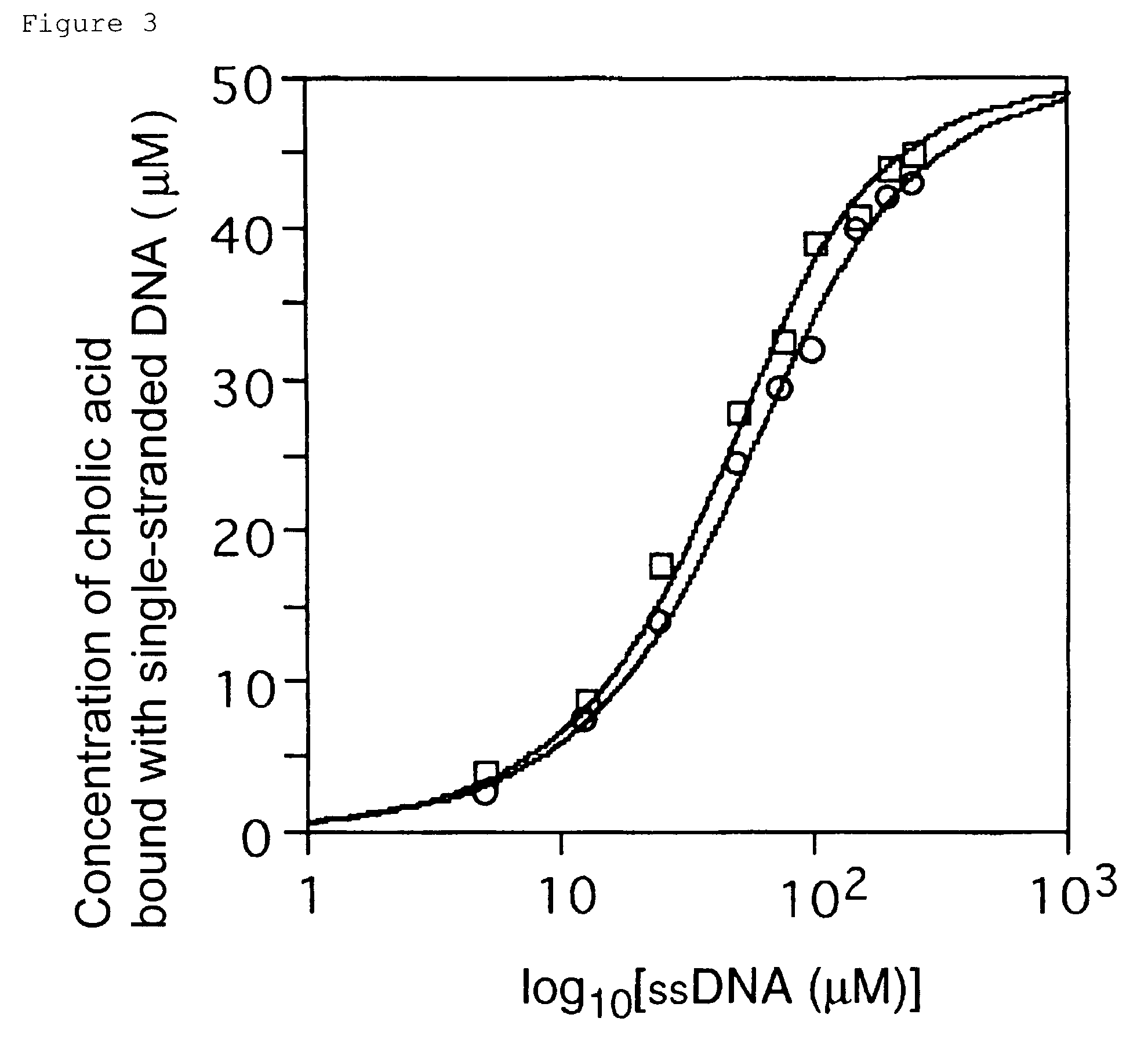Method for detecting target nucleotide sequences
a target nucleotide and sequence technology, applied in the field of target nucleotide sequence detection, can solve the problems of insufficient measures, difficult to achieve high sensitivity with this method, and adsorption of labeled probes to solid phase independent of the target nucleotid
- Summary
- Abstract
- Description
- Claims
- Application Information
AI Technical Summary
Benefits of technology
Problems solved by technology
Method used
Image
Examples
example 1
Selection of DNA Aptamers that Bind to Cholic Acid by the SELEX Method
(1) Procedure for Selecting DNA Aptamers Binding to Cholic Acid
[0071]DNA aptamers that specifically bind to cholic acid were selected from a single-stranded DNA (hereinafter abbreviated as “ssDNA”) pool containing single-stranded 100-mer oligonucleotides, which include random inserts of 64 nucleotides (5′-GTACCAGCTTATTCAATT-N64-AGATAGTATGTTCATCAG-3′; SEQ ID NO: 1) (N64 represents a random sequence with 64 nucleotides), by the SELEX method (Nature 355, 564-566, 1990). The single-stranded DNA library contained about 9×1014 independent sequences. The ssDNAs were synthesized by the phosphoamidate method, and were purified by high-performance liquid chromatography. The 100-mer DNAs were purified by solid-phase extraction using reverse-phase resins.
[0072]Each round of the selection was conducted as follows. First, a 100 mer single-strand oligonucleotide with a random insert of 64 nucleotides was denatured in selection b...
example 2
Search for Cholic Acid Binding Motif Sequences Using Deletion Mutants of Various DNA Aptamers
(1) Dissociation Constant Determination
[0085]The affinity of cholic acid with ssDNAs was analyzed by the equilibrium-filtration method (Science 263: 1425-1429, 1994). Cholic acid was added to the DNA samples in the selection buffer (200 μl) at a final concentration of 50 μM. Each binding mixture was incubated at 25° C. for 5 min. The mixture was then placed in Microcon 10 filtration device (Amicon) and centrifuged for 15 min at 850×g. Cholic acid that is not bound to the ssDNAs can be recovered as the filtrate by this procedure. The concentrations of cholic acid in 20 to 30 μl of filtrate were determined by diagnostic kit (WAKO chemical) for quantitative determination using 3α-hydroxysteroid dehydrogenase and diaphorase including p-nitrotetrazolium blue dye and nicotinamide adenine dinucleotide. For each ssDNA sample, the concentration of bound cholic acid (Cb) was determined by the differen...
example 3
Influences of Single-Nucleotide and Single-Base-Pair Mutations on the Cholic Acid Binding Affinity
(1) Influences of Substitutions in the Stem or Loop on the Affinity
[0098]In order to determine the important components responsible for the formation of predicted three-way-junction structure and the binding with cholic acid in the selected clones, the deletion mutant ch2-40, which contains the three-way-junction region of clone 2, was subjected for mutation analysis. A series of ch2-40 mutants, which contain single-nucleotide substitution, single-base-pair substitution, or single-nucleotide deletion or insertion, were synthesized. The relative binding affinity of each mutant for cholic acid was assessed by the “equilibrium-filtration method”. FIG. 5a shows the binding affinity of the deletion mutant ch2-40, when the nucleotide has been substituted with the nucleotide indicated with an arrow. FIG. 5b shows the binding affinity of ch2-40, when a base pair forming the stem region of the t...
PUM
| Property | Measurement | Unit |
|---|---|---|
| Fraction | aaaaa | aaaaa |
| Fraction | aaaaa | aaaaa |
| Length | aaaaa | aaaaa |
Abstract
Description
Claims
Application Information
 Login to View More
Login to View More - R&D
- Intellectual Property
- Life Sciences
- Materials
- Tech Scout
- Unparalleled Data Quality
- Higher Quality Content
- 60% Fewer Hallucinations
Browse by: Latest US Patents, China's latest patents, Technical Efficacy Thesaurus, Application Domain, Technology Topic, Popular Technical Reports.
© 2025 PatSnap. All rights reserved.Legal|Privacy policy|Modern Slavery Act Transparency Statement|Sitemap|About US| Contact US: help@patsnap.com



